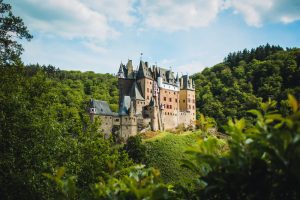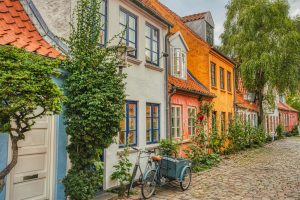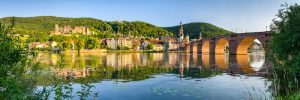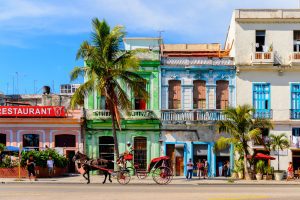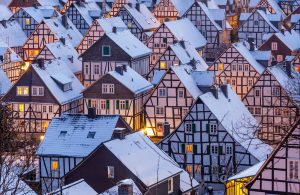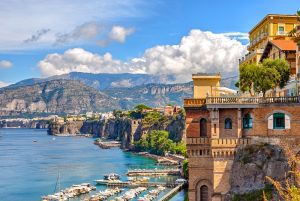Whether you’re headed to Germany for the first time or the 100th, you’ll find an overwhelming amount of things to see and do. It’s a country that truly has it all – from half-timbered houses and fairytale-like castles to gorgeous river towns and beautiful nature scenes.
From north to south, Germany boasts an array of mesmerizing cities, whether sweeping metropolises or tiny medieval villages. Its amazing culinary scene will satisfy any foodie, not to mention the world-famous beer, wine, and festivals held throughout the year.
No matter where you go, you’ll find that each city has its own distinct vibe and culture. You’d be hard-pressed to find a town in Germany that isn’t absolutely stunning – but we’ve rounded up the top 16 cities to visit in Germany that’ll help you nail down your itinerary.
Table of Contents
1. Berlin
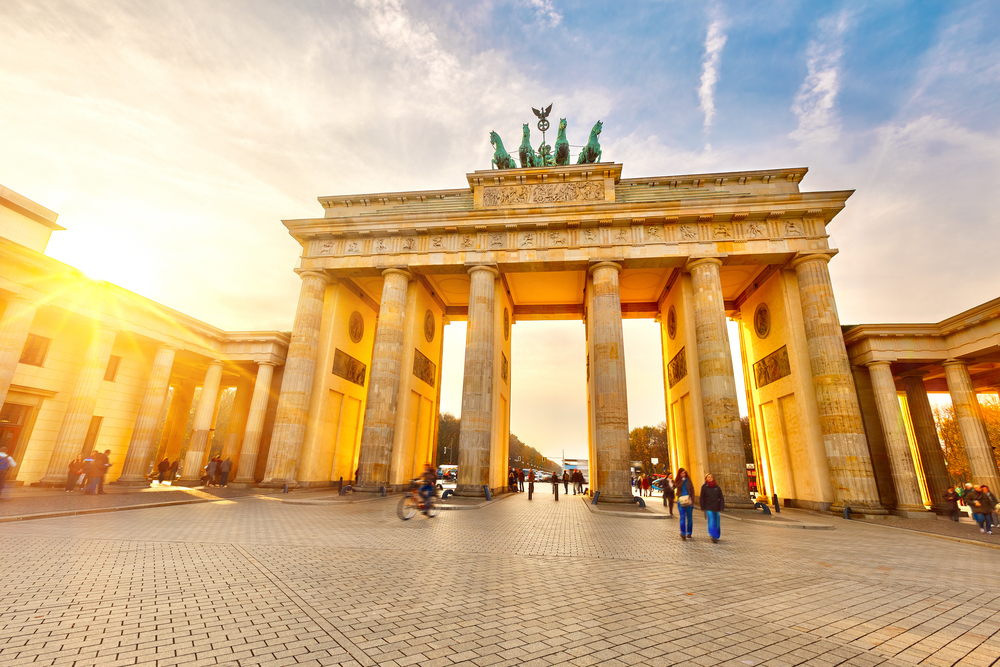
Germany’s capital is easily one of the best cities in the country, and history buffs and party animals alike should put Berlin at the top of their lists.
Most known for its intense history, learning about Berlin’s past is a great way to start your journey. Visit the Holocaust Museum and Memorial to learn more about the atrocities of World War II, head to Checkpoint Charlie and the remains of the Berlin Wall, or take a walking tour for a full (albeit brief) overview of the city’s past.
Today, Berlin is a city that has learned from its earlier days – and you’ll notice a big emphasis on personal freedom, creative lifestyles, and an overall live-and-let-live attitude that can be seen everywhere. Some of Berlin’s most notorious clubs don’t close their doors t all, from Friday- Monday morning – so you’ll find people dancing from sun up to sun down and every hour in between.
Even if you’re not keen on a weekend-long extravaganza, the nightlife in Berlin is definitely worth an experience. Berlin is a big city that feels like a small town, so you’ll find plenty of smaller bars and pubs around town.
A lot of the main neighborhoods are easily walkable, and if you do find yourself needing to go a bit further than your own two feet can take you, the public transportation here is some of the best in Europe.
2. Munich
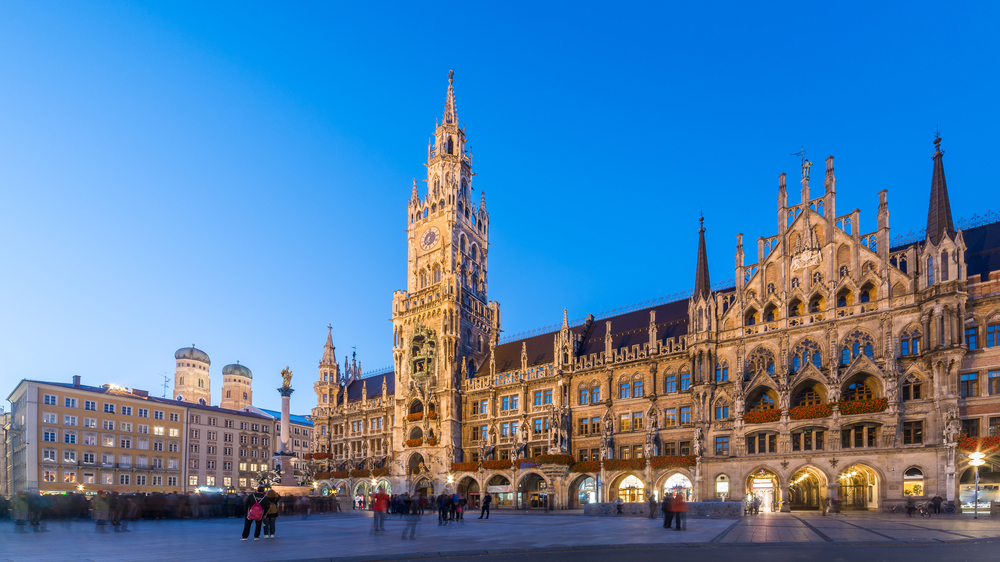
Another one of Germany’s best cities can be found further to the south, in the Bavarian region. Munich is a world away from Berlin – and not just in location. Berlin had to be rebuilt in a modern fashion after it was nearly destroyed during World War II, while Munich was spared – so much of the city’s stunning ancient architecture remains today.
Marienplatz is the best place to see some of the most iconic structures in Munich, specifically the Neues Rathaus. After you’ve had a look at this imposing structure from the outside, can climb up to the towers for a sweeping view of the square below.
Just like the architecture, the traditions of Munich have prevailed throughout the centuries, and the brewing tradition is one of the strongest. Its famous festival, Oktoberfest, is held in Munich every year. Millions of people from around the world flock to the city clad in their best lederhosen to celebrate and indulge in liter-sized mugs of locally brewed beer.
No matter what time of year you’re visiting, you can still enjoy a delicious brew (or two!) at the famous beer hall, or at one of the cozier taverns.
Munich provides plenty in the way of entertainment. Art lovers should check out the Kunstareal, an impressive art district home to multiple galleries and art museums. Those looking to delve deeper into the history of Munich can take a tour of the Residentz, the home of Bavaria’s First family for over 700 years.
3. Schloss Neuschwanstein
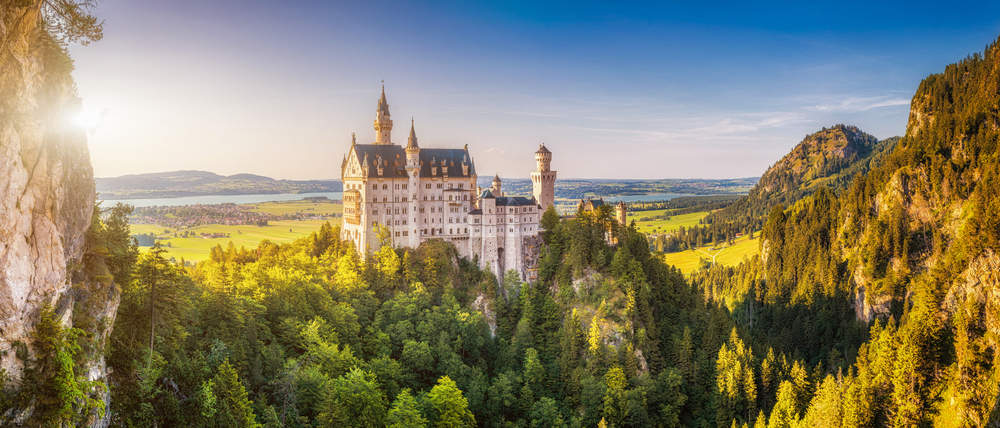
Located a few hours south of Munich is one of Germany’s most beautiful castles, Schloss Neuschwanstein – which is really saying something, considering Germany is home to nearly 20,000 castles!
Although not a city, the castle has easily earned a spot on our list for the sheer greatness of it. Disney’s iconic Sleeping Beauty castle was actually based off of Neuschwanstein – so when we say it looks like it belongs in a fairy tale, it’s true.
The lavish estate is perched atop a mountainside and was quite an undertaking to build, especially in 1869, when construction began. King Ludwig II actually dreamt up the design for the castle himself, but for all the labor and money spent, he only ever spent 170 days in this stunning fortress.
Today, the castle is open for tours. The completed rooms are truly a sight to see, as are the views from the windows. For the most famous view of the castle from afar, you can take the 10-minute journey up to Mary’s Bridge after your tour.
4. The Black Forest
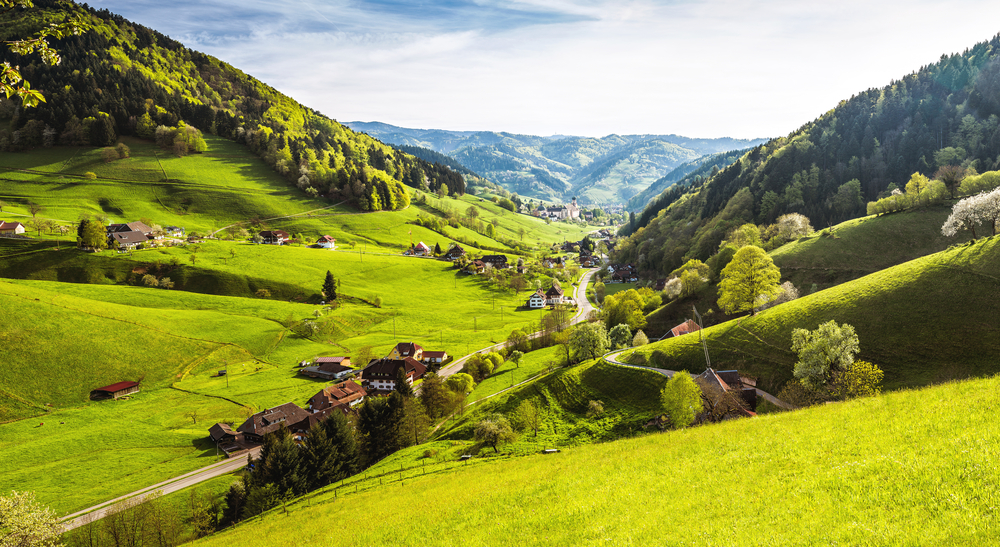
If you’re not ready to leave the fairytale world of Schloss Neuschwanstein behind, embark on a journey through the dark and dazzling Black Forest. This verdant mountain region can be found along the German-French border, and the best way to explore the area is by car, via the Schwarzwaldhochstrasse, “Black Forest Highway”.
Lakes, hills, and forests make up most of the scenery here, and you’ll want to keep a slow pace as you take in the incredible views. You won’t want to miss any of the gorgeous views, but there are a fair amount of hairpin curves along the route.
This lush area has also inspired a number of fairy tales and children’s stories, in particular, the ones in the Brothers Grimm folklore.
You’ll also encounter a collection of charming towns and villages on your way through the forest, including farming communities, summertime resorts, spa towns, and villages nestled into the mountainside. If you can only visit a few, don’t miss Kinzigtal, Alpirsbach, and Titisee.
Those who want to breathe in the rich forest air can hike or bike up to the top of Schauinsland Peak for some of the best views in the region. Take the cable car or opt for the more easy-going loop of Martinskapelle if you’re after a more relaxing experience.
5. The Rhine Valley
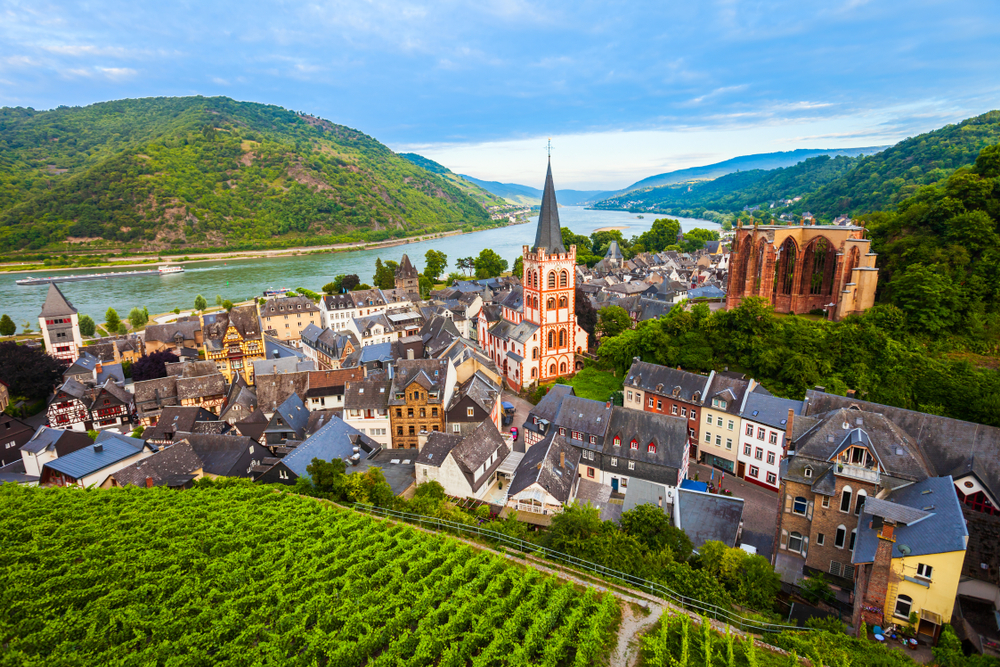
One of the most palace-populated areas in Germany is the Rhine Valley. This stunning region has so much more to offer than just castles, though.
Following the Rhine River from Koblenz to Rüdesheim, the Rhine Valley is notably one of the most scenic areas in all of Germany. As you follow the river, you’ll get views of striking hilltop castles, idyllic villages carved into the valleys, and lush hillsides covered with vineyards.
If you don’t have a car, you can take a train across this route – though it’s much more pleasing to be able to stop off at all the castles and wineries that your heart desires.
This 65 km stretch is known as the Oberes Mittelrheintal, and was dubbed a UNESCO World Heritage Site in 2002. With its charming towns, delicious wines, and incredible views – what’s not to love?
6. Heidelberg
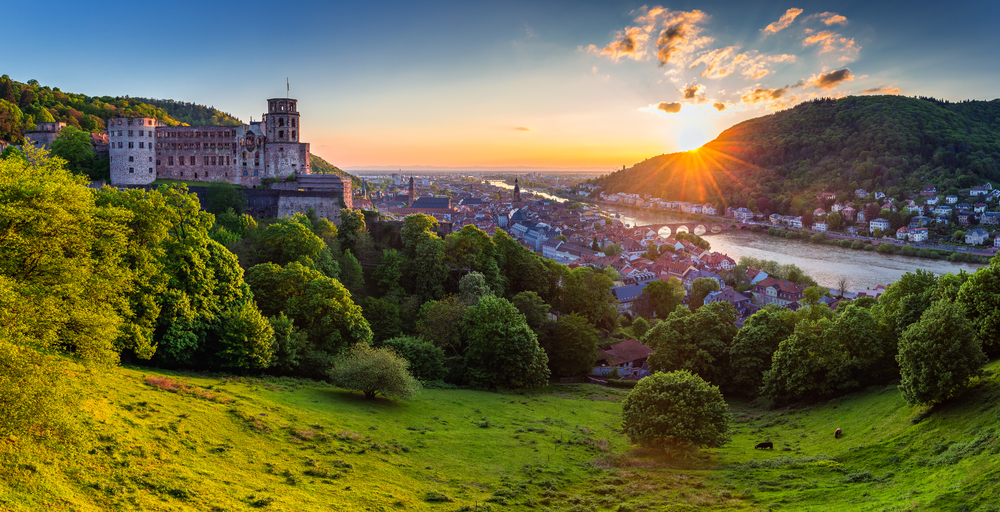
If you continue south down the Rhine, you’ll encounter another of the best cities to visit in Germany. You’ll have to cross the Rhine to get to the banks of the Neckar River, where you’ll find the historic city of Heidelberg.
This lush college town is home to the country’s oldest university, along with some remarkably preserved architecture. Heidelberg somehow emerged basically unscathed from the second world war, and one of the best ways to feel the pulse of this city is by admiring its ancient architecture.
Altstadt, or “Old Town”, is aptly named; it’s here you’ll find the city’s historic heart. Meander along the cobblestone streets, admire the impressive churches, and don’t miss the massive Heidelberg Palace.
Although the castle has taken on some serious damage over the years, much of it remains – and you can take a tour of the interior or just walk its grounds, enjoying epic views of the town and river below.
Other points of interest in Heidelberg include the old pedestrian bridge, the old student prison (which, luckily for current students is no longer in use), and the lovely and historic Ruprecht-Karls University.
If you don’t have much time in Heidelberg, take a walk along the scenic Philosophenweg for views of all the most important spots in town.
7. Dresden
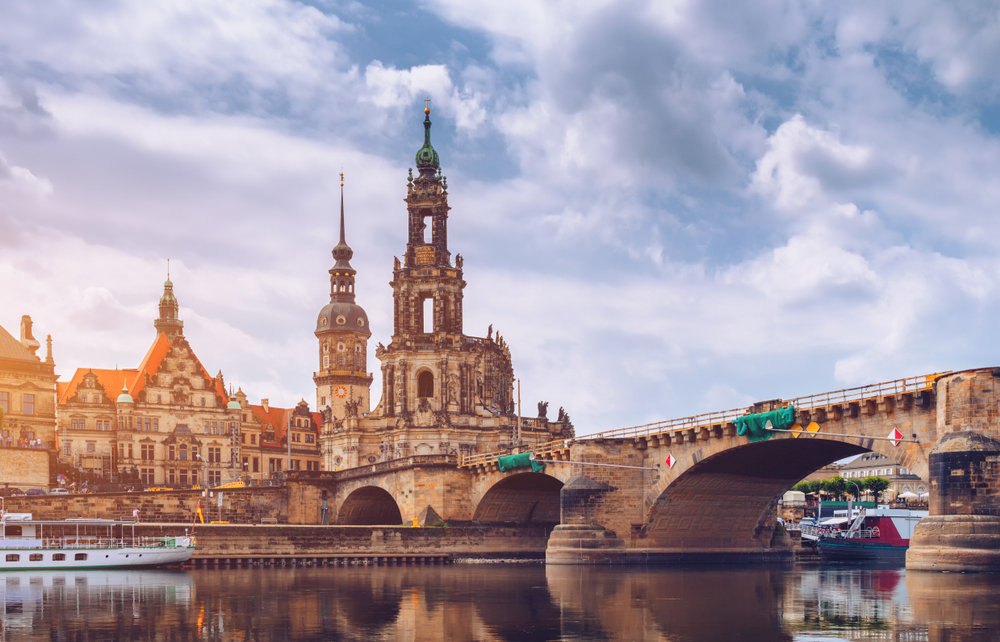
Another of the best cities to visit in Germany is the eastern city of Dresden. Located on the banks of the Elbe River, Dresden boasts an insanely scenic skyline of ancient spires, domes, and towers.
Much of the city was destroyed during World War II, but the city has rebuilt parts of town in its former glory. Although not everything survived, much of the town’s most prized works of art and treasures were actually removed before the bombings, and are now on display in the rebuilt museums around Dresden.
After you take in the impressive architecture, head across the river to the Neustadt district to enjoy the city’s modern vibes. The area is decked out in trendy bars and restaurants. If you’re not already planning on staying overnight in Dresden, its nightlife might just persuade you to do so.
8. Trier
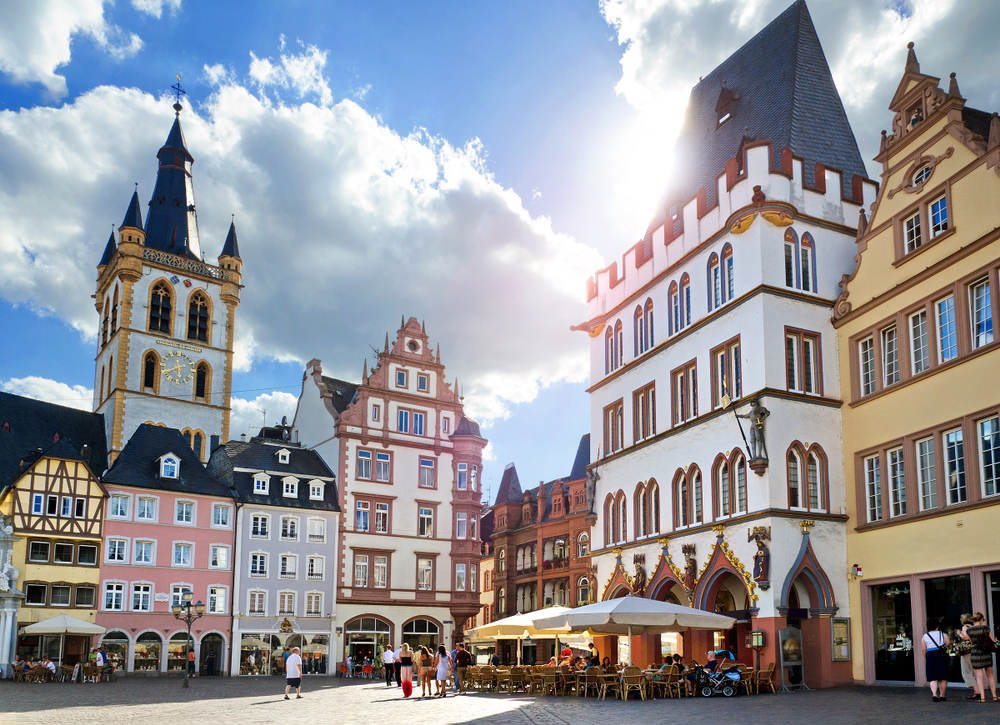
On the opposite side of the country, you’ll find Trier, another top must-see city to visit. This ancient town is one of the oldest in Germany and dates all the way back to Roman Empire.
There are some Roman ruins still standing around the city today, and there are more here than in any other place in Germany. Some of the most well-preserved structures include the Porta Negra gate, the Roman baths, and the bridge stretching across the Moselle River. If you’re curious about the history from this time period, you can check out even more ancient artifacts in the Archaeological Museum.
Those who are interested in the town’s stunning architecture can seek out some of the “newer” structures around town, including Trier Saint Peter’s Cathedral and the Basilica St. Matthias, Germany’s oldest Gothic church.
One of the best parts about Trier is that it’s very pedestrian-friendly, so you can easily explore most of the town by foot.
Foodies will enjoy the many mouthwatering restaurants and cafes around town, and wine lovers can indulge in some of the delicious Rieslings that this area is famous for.
9. Nuremberg
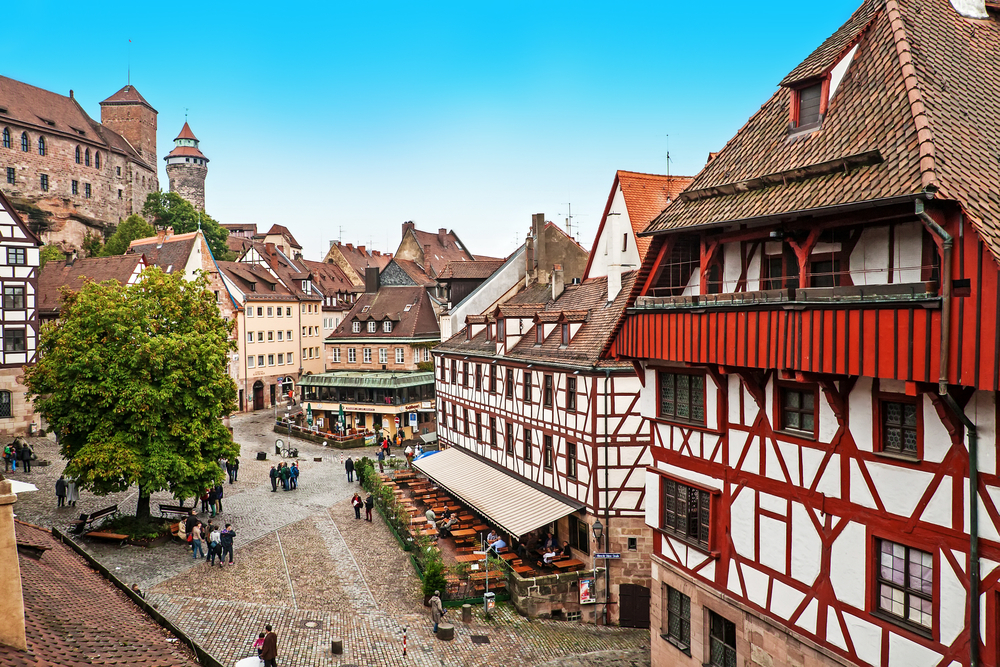
Nuremberg has historically been one of Germany’s most important cities, and is also one of the best places to visit. This vibrant city is the second largest in Bavaria and plays host to swaths of tourists and German natives alike.
Nuremberg is especially popular in the winter, thanks to their Christmas Market, which is one of the oldest and most popular in the whole country. But, no matter what time of year you visit, you’ll have a hard time not falling in love with this enchanting city.
The Nazi party also saw the draw of Nuremberg, and it quickly became the backdrop for many of the party’s activities including some of the first rallies and boycotts of Jewish businesses. At the end of the war, Nuremberg was decimated by Allied bombs, but some of the city has since been painstakingly rebuilt to its former glory using the same original stones.
The city was later chosen as the site where the war crime tribunal would take place – and today the Nuremberg Trials are almost as well known as the war itself.
There are tons of historical structures around town, both from WWII and prior. Nuremberg was once the unofficial capital of the Holy Roman Empire, and many kings resided in the town’s castle and hid their crown jewels inside its walls. The jewels have since been relocated, but you can still see what remains of the castle.
The Altstadt (Old Town) is also a cool place to wander around and admire the “old” architecture, and there are tons of museums around town for those interested in learning more about the history of this interesting city.
10. Cologne
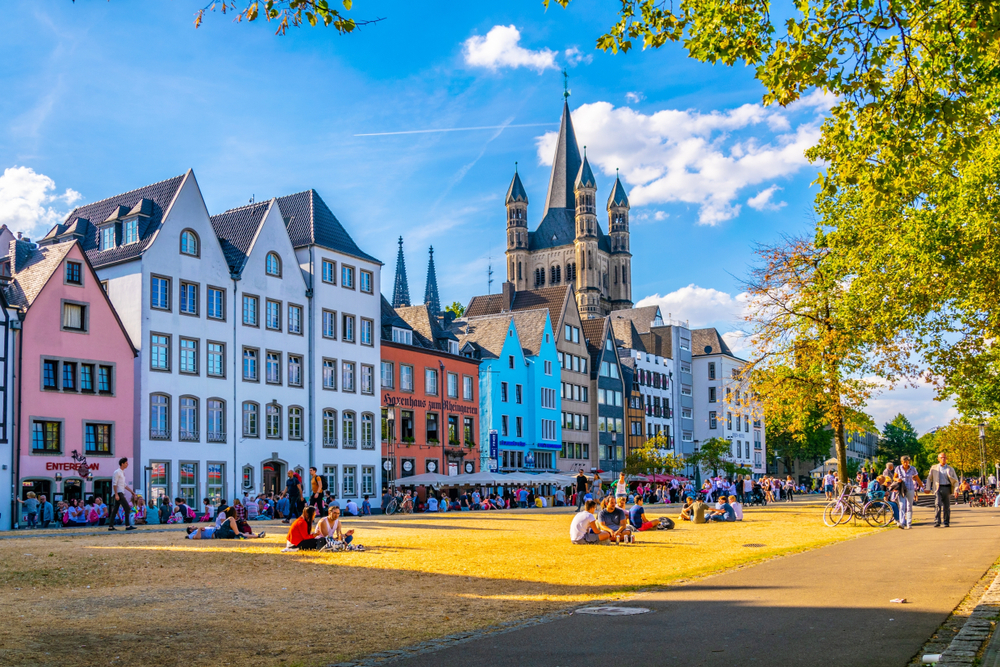
Although Cologne is one of Germany’s largest cities, it’s incredibly charming and provides visitors with a small-town feel that is hard to match. The city’s main claim to fame is the stunning gothic cathedral towering over the rest of the sprawling city.
This massive edifice held the position of Europe’s tallest structure until the Eiffel tower was built, but its bedazzled interior, medieval stained glass windows, and the ancient artwork keep the cathedral in a league of its own to this day.
After you’ve had your fill of gawking at the cathedral, you can enjoy some of the underrated attractions in Cologne. A fair warning: there are a lot of them! While the cathedral steals most of the attention, sites like the historic Old Town often go unnoticed.
Similar to Nuremberg, Cologne was heavily bombed during the second world war, and much of the “ancient” structures you see are a product of reconstruction. This doesn’t make them any less incredible, however, so don’t miss out on this area while you’re in town.
Although most people don’t spend a lot of time in Cologne, it’s a great place to make your home base as you discover the surrounding area and its many amazing day trips.
11. Saxon Switzerland

Nature lovers looking for the best of what Germany has to offer should check out Saxon Switzerland. This unique area is full of whimsical rock formations that only mother nature could think up.
Rugged cliffs, flat mountains, and deep valleys make up much of the landscape, but you’ll also find a few hilltop castles and quaint villages nestled along the Elbe River. To truly immerse yourself in nature, spend some time in the Saxon Switzerland National Park where you’ll find plenty of hiking trails, rock climbing areas, and some great biking paths.
You could also spend some time on the Elbe Cycle Route, a popular portion of a larger European network of biking trails. Even if you’re not much for outdoor recreation, driving through this area is well worth it and can be done on a day trip from Dresden.
12. Potsdam
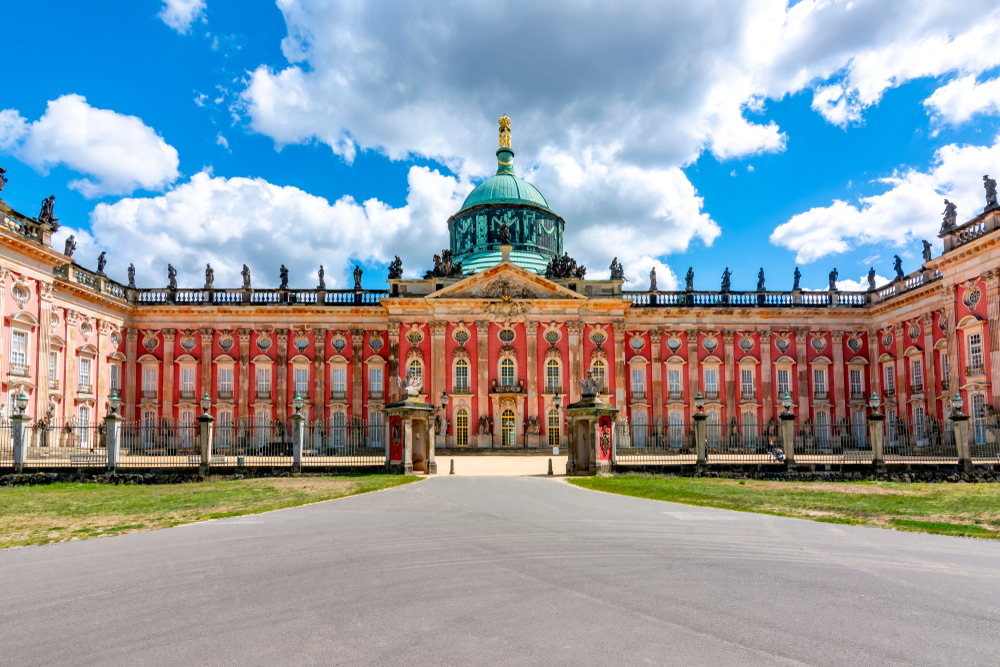
Located just 25 km (15 mi) south of Berlin, Potsdam is one of the most accessible and best cities to visit in Germany. The town is full of lush gardens, beautiful lakes, and lavish palaces, making it easy to imagine the days when Prussian royalty could be seen strolling around the city.
Over 150 buildings have been categorized as UNESCO World Heritage Sites, although Potsdam is most famous for its castles. The Schloss Sanssouci is perhaps the most iconic in town, and the park surrounding it is simply glorious. The Schloss Cecilienhof is not quite as grand but does have an interesting history as the site where post-war Germany’s fate was decided.
The city is extremely bike-able, and if you’re short on time, it’s the fastest way to see as many sites as you can. Other must-sees in Potsdam include:
- The Neuer Markt (one of the most well-preserved Baroque-style squares in Europe)
- The Russian Quarter
- The Dutch Quarter
- The Alter Markt
13. Hamburg
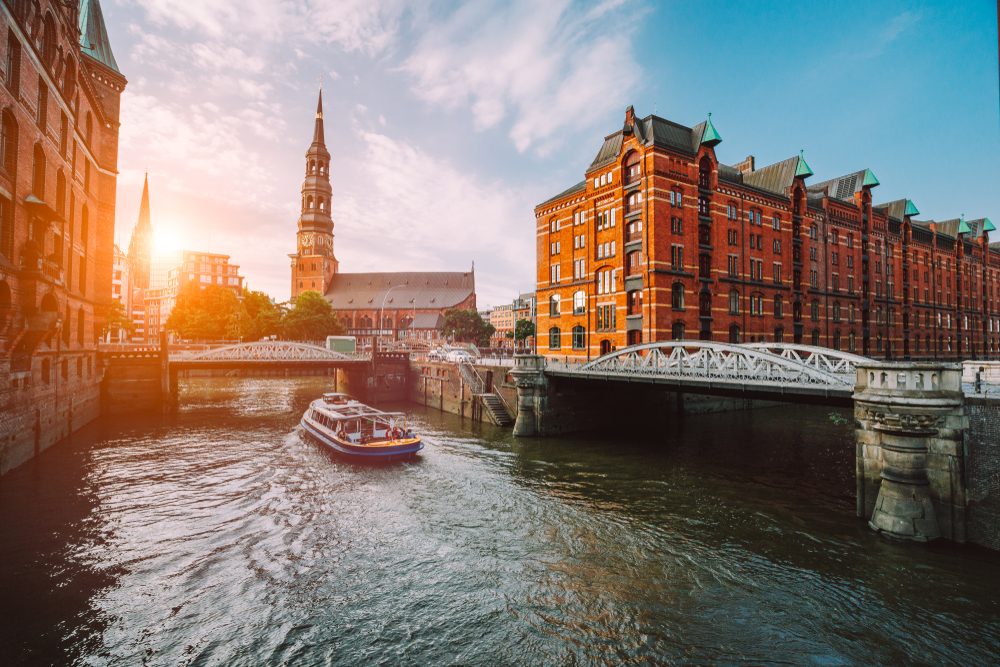
As the self-proclaimed “Gateway to the World”, Hamburg is easily one of the best cities to visit in Germany. Since the middle ages, trade has been at the forefront of Hamburg’s most profitable industries, making it one of the country’s wealthiest cities to this day.
For one of the most lucrative places around, Hamburg’s vibe is certainly not one of glitz or pretentiousness. It’s actually unequivocally cool, with great nightlife, vibrant neighborhoods, and a culturally diverse gastronomic scene.
That’s not to say that the city itself doesn’t ooze opulence and beauty around every turn, and you can definitely see Hamburg’s rich history in various areas around town.
The Elbphilharmonie is one such building, and this massive concert hall is one of the biggest of its kind in the whole world. Obviously, music is a big part of the culture in Hamburg, and you’ll find everything from classic operas to sultry music festivals here.
Hamburg also has quite a few museums, tons of green space for picnics, canal boat tours, a fish market, and even a seedy yet splendid red light district. There are also some great day trips from Hamburg, so you may want to consider staying in this northern oasis for a while!
14. Bamberg
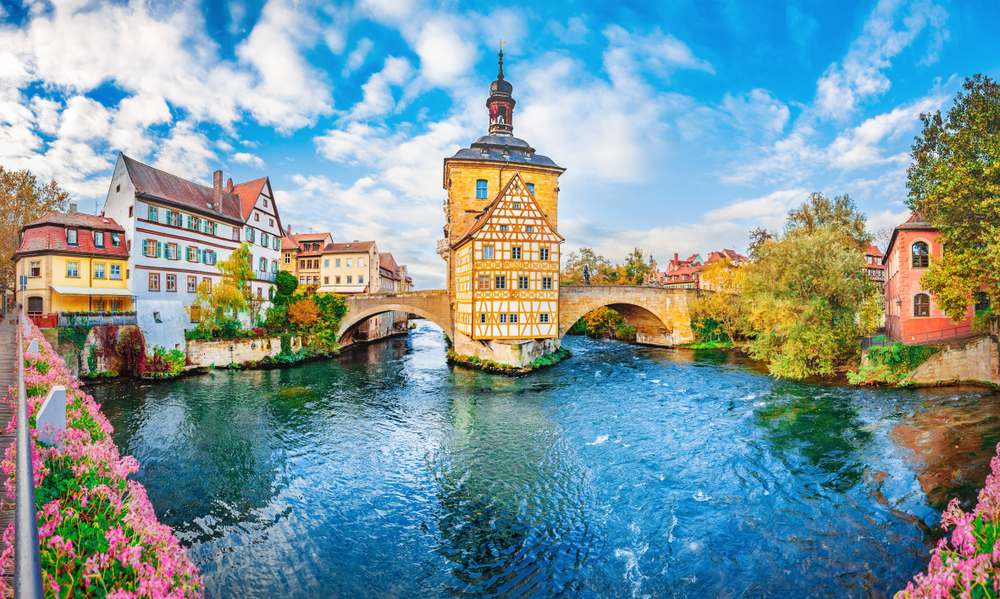
Germany has quite a few places that look like they belong in a fairytale, and the town of Bamberg might just take the cake. Perched on the hilly shores of the Regnitz River, this ancient city will have you feeling like you stepped back in time.
The entire Altstadt (old town) has been designated a UNESCO World Heritage Site, and you could easily spend hours strolling around the narrow cobblestoned streets and admiring the half-timbered houses that line them.
The Altes Rathaus is the most iconic and impressive building in Bramberg, and you’ll find it on its own little island between the banks of the river. Other noteworthy places include the Bamberg Cathedral, the Altenburg Castle, and the neighborhood of Little Venice.
Once you’ve had enough sightseeing, you can hunker down at one of the 10 breweries around town and enjoy one of the city’s famous smokey brews. The Schlenkerla Brewery is the most famous of them all, and they still serve beer the way they did back in 1405 – right out of the wooden barrel! They also offer an array of tantalizing Bavarian specialty dishes to accompany their traditional brews.
Beer is a big part of Bamberg’s history and if you’d like to learn more about it you can swing by the Franconian Brewery Museum. You could also spend some time in the Gardeners’ District to see traditional methods of growing wine grapes, onions, licorice, and other traditional crops.
Clearly, there’s a lot to see and do in Bamberg, so if you’d like to experience the city without the hordes of tourists, we recommend staying the night.
15. Rothenburg ob der Tauber
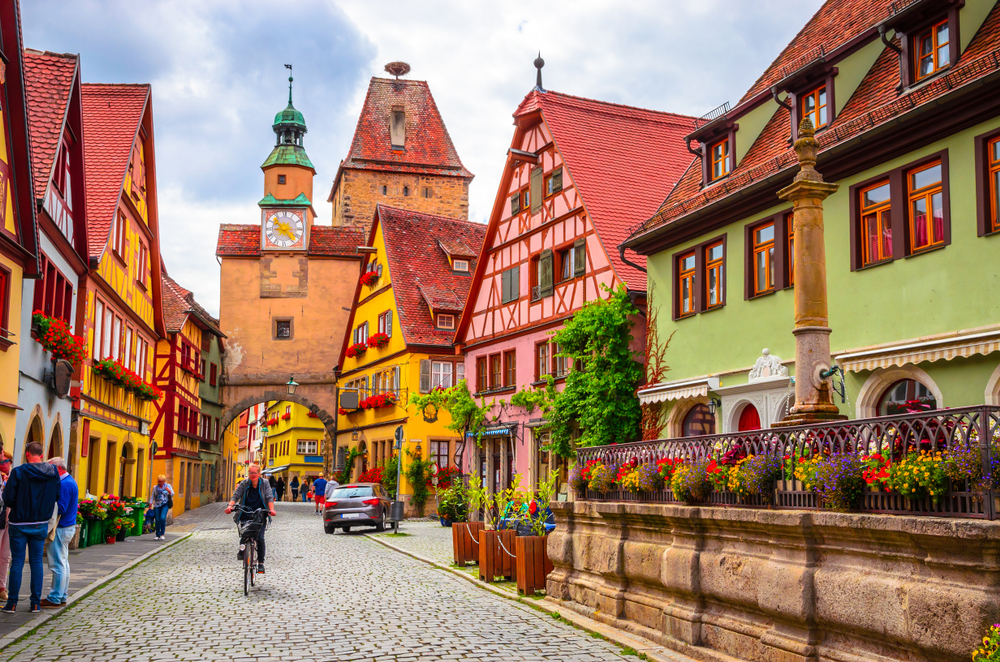
Another medieval must-see is the quaint town of Rothenburg ob der Tauber. Translating to “above the Tauber River”, the city is just that and so much more.
Thanks to strict conservation laws, the old city hasn’t changed much over the years, and you’ll find ancient cobblestone streets, half-timbered houses, towers, and gatehouses much the same as they were thousands of years ago.
There are truly endless sites to see in Rothenburg ob der Tauber, and the best way to see everything is simply by ambling through this ancient town.
Unfortunately, its medieval charm has not gone unnoticed – so if you want to avoid the flocks of tourists that populate the streets, consider sticking around for a night or two.
16. Frankfurt
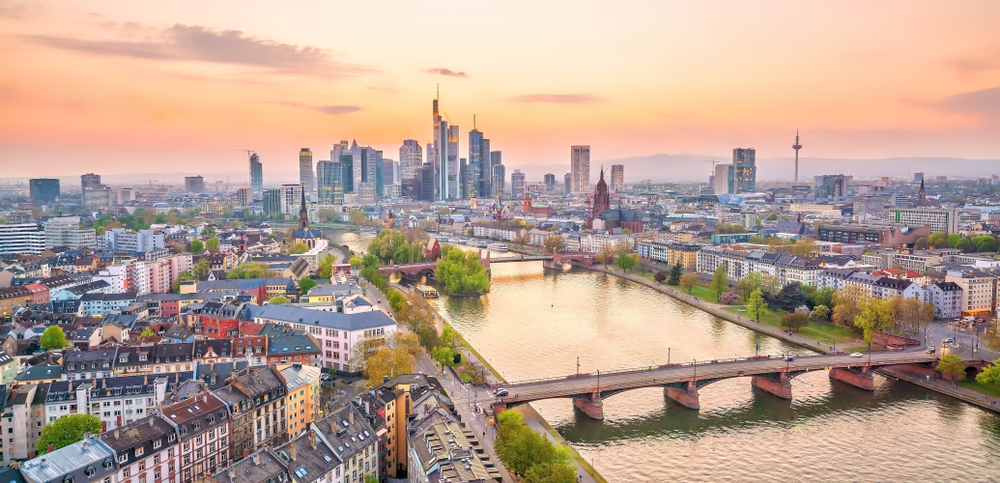
Frankfurt is Germany’s financial hub, and although it may seem like there’s not much to do besides admiring the skyline and doing some shopping, you’ll actually have found one of the country’s best cities to visit.
The Altstadt (Old Town) is one of the best areas in town to get a traditional German experience. Like many places around the country, Frankfurt’s old town is a reconstruction of what the area looked like before being bombed in World War II. The enchanting ambiance here is palpable, and we recommend soaking it in for a while at an outdoor café, an apple-wine tavern, or by taking a walk along the scenic riverside.
Frankfurt is also known for its cultural offerings, from hearty regional food and a vibrant nightlife to its large collection of museums and famous festivals. If you’re in the area in November or December, don’t miss one of Germany’s best Christmas markets, held in the Marktplatz of Altstadt.


